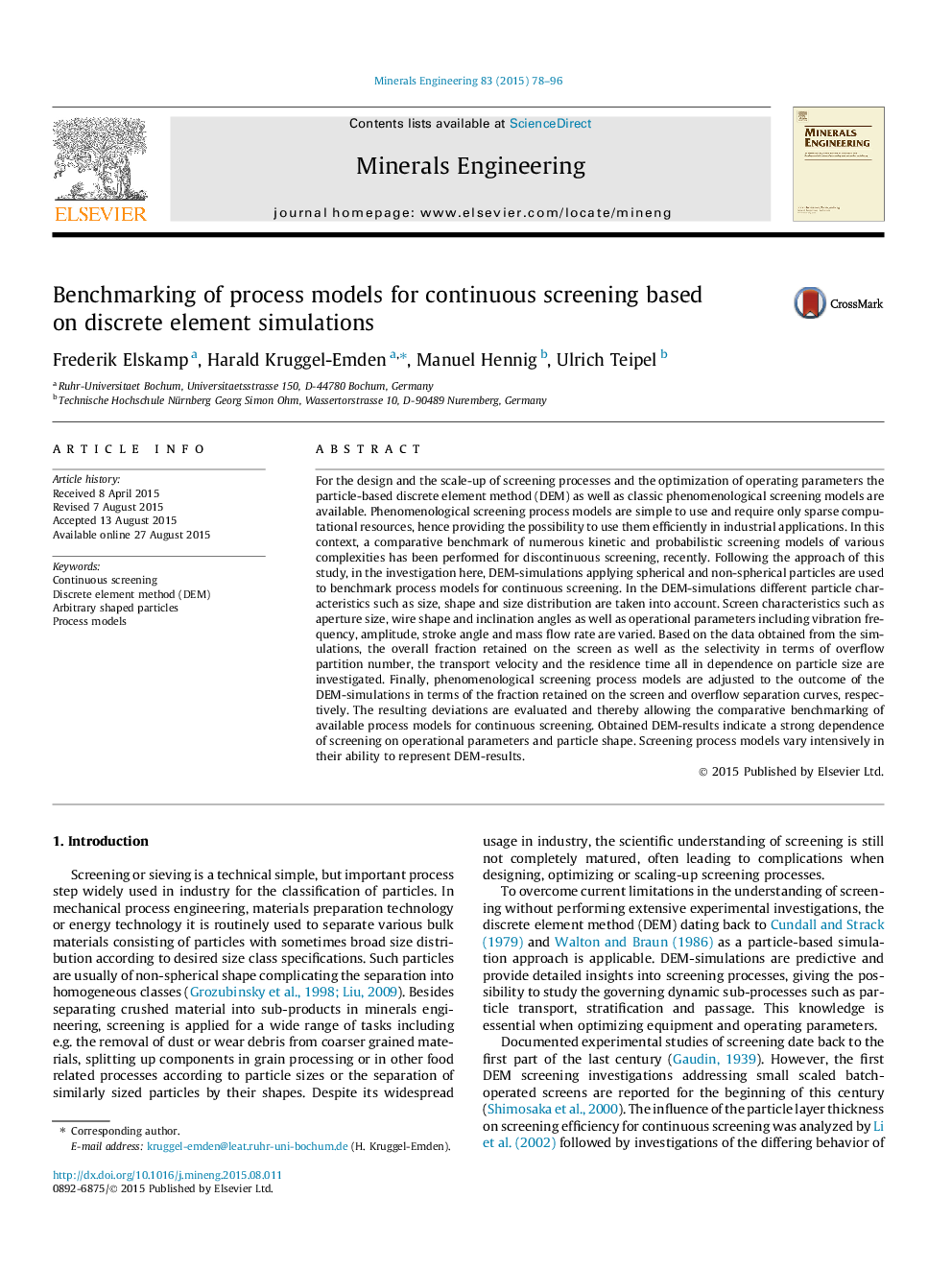| Article ID | Journal | Published Year | Pages | File Type |
|---|---|---|---|---|
| 232830 | Minerals Engineering | 2015 | 19 Pages |
•The DEM was used to perform continuous screening investigations of non-spherical particles.•Obtained results indicate a strong dependence on operational parameters/particle shape.•Screening process models vary intensively in their ability to represent DEM-results.
For the design and the scale-up of screening processes and the optimization of operating parameters the particle-based discrete element method (DEM) as well as classic phenomenological screening models are available. Phenomenological screening process models are simple to use and require only sparse computational resources, hence providing the possibility to use them efficiently in industrial applications. In this context, a comparative benchmark of numerous kinetic and probabilistic screening models of various complexities has been performed for discontinuous screening, recently. Following the approach of this study, in the investigation here, DEM-simulations applying spherical and non-spherical particles are used to benchmark process models for continuous screening. In the DEM-simulations different particle characteristics such as size, shape and size distribution are taken into account. Screen characteristics such as aperture size, wire shape and inclination angles as well as operational parameters including vibration frequency, amplitude, stroke angle and mass flow rate are varied. Based on the data obtained from the simulations, the overall fraction retained on the screen as well as the selectivity in terms of overflow partition number, the transport velocity and the residence time all in dependence on particle size are investigated. Finally, phenomenological screening process models are adjusted to the outcome of the DEM-simulations in terms of the fraction retained on the screen and overflow separation curves, respectively. The resulting deviations are evaluated and thereby allowing the comparative benchmarking of available process models for continuous screening. Obtained DEM-results indicate a strong dependence of screening on operational parameters and particle shape. Screening process models vary intensively in their ability to represent DEM-results.
Graphical abstractFigure optionsDownload full-size imageDownload as PowerPoint slide
